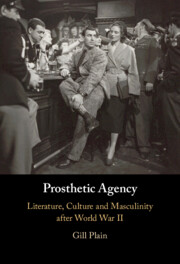Chapter 2 - Cinema in the Sky
Risk, Responsibility and Domestic Citizenship
from Part I - Technology
Published online by Cambridge University Press: 29 June 2023
Summary
Given the potency of the wartime myth of the flyer, it is not surprising that airmen should continue to feature in films in the years after the conflict. What is perhaps more surprising is the speed at which their screen representation mutated from unqualified heroism to an anxious ambivalence.1 Increasingly, the airman appeared as damaged, dangerous or simply adrift. The traumatised pilot POW, symbol of the unseen damage of war, is at the heart of Nigel Balchin’s adaptation of his novel Mine Own Executioner (1947), while in They Made Me a Fugitive (1947), former RAF officer Clem moves swiftly from being bored and drunk to active criminality. In the paranoid Cold War conspiracy thriller High Treason (1951), the RAF sergeant wireless instructor is a feeble and easily led figure who just wants to be left alone to ‘think things out’; similarly, the test pilot in The Teckman Mystery (1954) is weak, easily manipulated and better at dealing with technology than the intricacies of politics and rhetoric, a marked contrast to the cultural authority – verging on star status – enjoyed by actual postwar test pilots.2 Broken Journey (1948), by contrast, distinguishes between types of airman: the reckless warrior and the reliable public servant. In this film, the heroine must forget a wartime flyer-cad and learn to love the more prosaic postwar masculinity of a modest charter pilot played by James Donald, an actor who came to personify reliability in the period.3
- Type
- Chapter
- Information
- Prosthetic AgencyLiterature, Culture and Masculinity after World War II, pp. 81 - 110Publisher: Cambridge University PressPrint publication year: 2023

